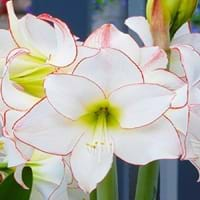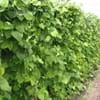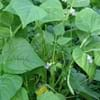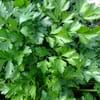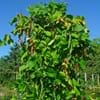What is
Life Span
Biennial and Perennial
Perennial
Type
Vegetable
Bulb or Corm or Tuber
Origin
Europe, Western Asia
Not Available
Types
Not Available
Not Available
Habitat
waste ground, wastelands
tropical environments
USDA Hardiness Zone
4-9
8-11
AHS Heat Zone
7-1
Not Available
Sunset Zone
A1, A2, A3, H1, H2, 1a, 1b, 2a, 2b, 3a, 3b, 4, 5, 6, 7, 8, 9, 10, 11, 12, 13, 14, 15, 16, 17, 18, 19, 20, 21, 22, 23, 24
21,22
Habit
Rosette/Stemless
Clump-Forming
Information
Plant Size
Minimum Height
15.20 cm
99+
38.10 cm
99+
Minimum Width
7.60 cm
99+
30.10 cm
99+
Plant Color
Flower Color
Yellow
White, Red, Light Pink
Flower Color Modifier
Bicolor
Bicolor
Fruit Color
Brown, Black
Green, Brown
Leaf Color in Spring
Green
Green, Dark Green
Leaf Color in Summer
Green
Light Green
Leaf Color in Fall
Green
Several shades of Green
Leaf Color in Winter
Not Available
Light Green
Shape
Leaf Shape
Pinnate
Long Linear
Thorns
No
No
Season
Plant Season
Summer
Spring, Summer, Winter
Growing Conditions
Sunlight
Full Sun
Full Sun, Partial Sun
Growth Rate
Medium
Medium
Type of Soil
Loam
Loam, Sand
The pH of Soil
Neutral
Acidic, Neutral
Soil Drainage
Well drained
Well drained
Bloom Time
Summer
Not Available
Repeat Bloomer
No
No
Tolerances
Drought
Deer resistant
Care
Where to Plant?
Ground, Pot
Container, Ground, Pot
How to Plant?
Seedlings
Divison, From Rhizomes, Tubers
Plant Maintenance
Medium
Low
Watering Plants
Watering Requirements
Average Water Needs, Do Not over Water, Keep the ground moist but not water-logged
Average Water Needs
In Summer
Lots of watering
Lots of watering
In Spring
Moderate
Moderate
In Winter
Average Water
Average Water
Soil
Soil pH
Neutral
Acidic, Neutral
Soil Type
Loam
Loam, Sand
Soil Drainage Capacity
Well drained
Well drained
Sun Exposure
Full Sun
Full Sun, Partial Sun
Pruning
Remove damaged leaves, Remove dead branches, Remove dead leaves
Cut or pinch the stems, Remove damaged leaves, Remove dead branches, Remove dead leaves
Fertilizers
All-Purpose Liquid Fertilizer
as it is a flowering plant, use high phosphorous content fertilizer, Nitrogen, Phosphorous, Potassium, Requires high amount of nitrogen
Pests and Diseases
Aphids, Armyworm, Cutworms, Downy mildew, Pitch canker, Red blotch
Aphids, Grasshoppers, Mealybugs, Mites, Red blotch, Slugs, Snails
Plant Tolerance
Drought
Deer resistant
Facts
Flowers
Showy
Showy
Flower Petal Number
Not Available
Not Available
Fruits
Showy Fruit
No
No
Edible Fruit
No
Not Available
Fragrance
Fragrant Flower
No
Not Available
Fragrant Fruit
No
No
Fragrant Leaf
Yes
No
Fragrant Bark/Stem
Yes
No
Showy Foliage
No
No
Showy Bark
No
No
Foliage Texture
Fine
Medium
Foliage Sheen
Matte
Glossy
Evergreen
No
No
Invasive
No
No
Self-Sowing
Yes
No
Attracts
Butterflies
Bees, Butterflies, Hummingbirds
Allergy
Stomach burn
poisonous if ingested
Benefits
Uses
Aesthetic Uses
Not Available
Beautification, Bouquets, Cottage Garden, Showy Purposes
Beauty Benefits
Blood purifying, Good for skin
Not Available
Edible Uses
Yes
No
Environmental Uses
Air purification
Not Available
Plant Benefits
Medicinal Uses
Aphrodisiac
Not Available
Part of Plant Used
Root
Flowers
Other Uses
Food for animals, Used as a nutritious food item
Used as Ornamental plant, Used for bedding in gardens
Used As Indoor Plant
Yes
Yes
Used As Outdoor Plant
Yes
Yes
Garden Design
Edible, Herb, Vegetable
Container, Cutflower, Houseplant, Mixed Border, Tropical
Scientific Name
Botanical Name
PASTINACA sativa
HIPPEASTRUM 'Picotee'
Common Name
Parsnip
Florist Amaryllis, Hippeastrum, Picotee Hippeastrum
In Hindi
चुकंदर
HIPPEASTRUM
In German
Pastinake
HIPPEASTRUM
In French
Panais
HIPPEASTRUM
In Spanish
Chirivía
Hippeastrum
In Greek
Είδος δαυκίου
Hippeastrum
In Portuguese
cherivia
HIPPEASTRUM
In Polish
Pasternak
Hippeastrum
In Latin
parsnip
Hippeastrum
Classification
Kingdom
Plantae
Plantae
Phylum
Magnoliophyta
Magnoliophyta
Class
Magnoliopsida
Magnoliopsida
Order
Apiales
Asparagales
Family
Apiaceae
Amaryllidaceae
Genus
Abelia
Amaryllis
Clade
Angiosperms, Asterids, Eudicots
Angiosperms, Monocots
Tribe
Not Available
Not Available
Subfamily
Not Available
Amaryllidoideae
Number of Species
Not Available
90
99+
|
||
|
||
|

